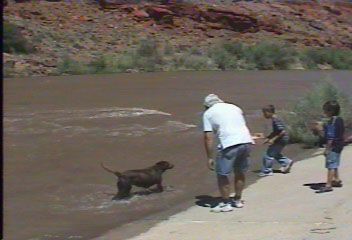
We spent the night in Grand Junction, Colorado where it
was very windy and dusty. Ed found a solar store that had the final
parts we needed to connect our DC to AC inverter. So by May 12, 2000
we were finally ready for Y2K.
 |
We left Arches National Park, near Moab, Utah and headed
north on Highway 128 along the Colorado River. (If you find a tennis
ball near Yuma, it is Cocoa's). We watched a lot of rafts out this
day. The River was swift and was about the consistency of chocolate
milk.
We spent the night in Grand Junction, Colorado where it
was very windy and dusty. Ed found a solar store that had the final
parts we needed to connect our DC to AC inverter. So by May 12, 2000
we were finally ready for Y2K.
|
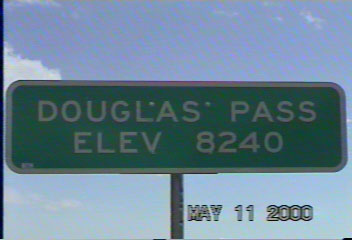 |
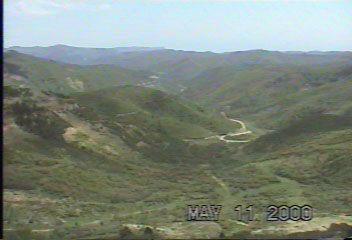 |
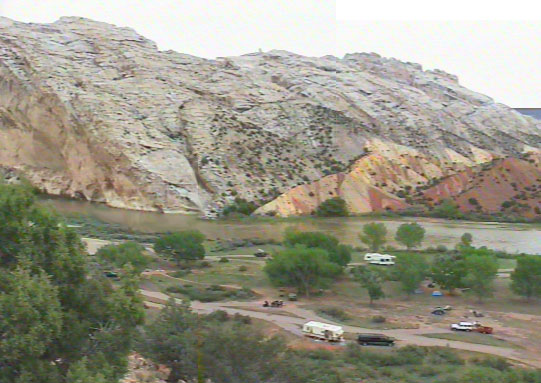 |
We arrived at Dinosaur National Park and found a great
campsite at Split Rock campground. (You can probably see in the photo to
the left why it's called it Split Rock). At night I would walk out
of the trailer and see an ominous large cliff. Our trailer is the
one near the river.
The rock here has all been tilted due to enormous buckling of the earth. The diagonal surface of the rock in this picture used to be level. There are several features that used to be horizontal that are now vertical. The tilt of the earth is very obvious here but its hard to catch it in a picture. You've just have to go see it for yourself. |
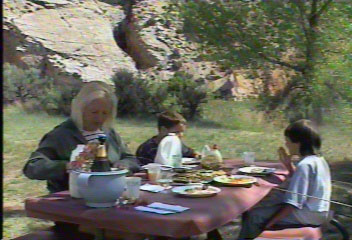 |
Sunday May 13th. What a great location for a Mother's
Day champagne breakfast.
After breakfast we explored the park. That evening we spotted a strange looking object in a tree. At first it looked like a bee hive. As we approached it looked more like a big fungus that grows in the rain forests of Washington state. Finally, at a distance of about seven feet it was clear that this was a huge swarm of bees settling in for the night. |
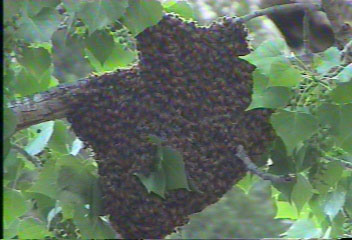 |
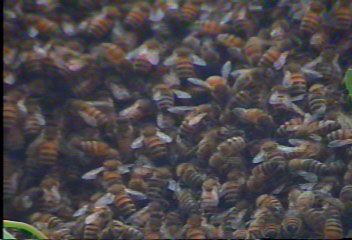 |
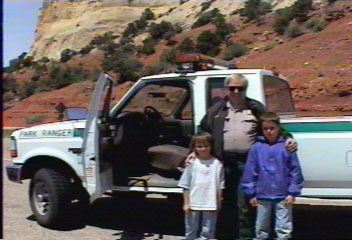 |
We met Ranger Rick, (yes, his name really is Rick). He must be the friendliest , (and most talkative), Ranger though out the entire National Park system. He has worked in many parks and enjoyed talking with us for almost an hour. He showed us all of his radio and protective equipment. Mitch and Max enjoyed operating the lights and sirens. |
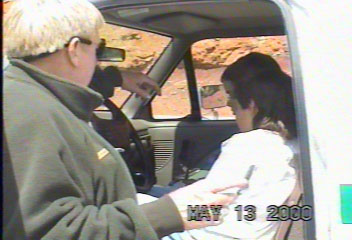 |
We saw several cattle roundups as we drove around this
part of the county. Five or six cowboys on horses would be
herding cattle into a corral where they would load the cows into trucks
or gather the calves for branding.
One day we were pulling the trailer along a winding road and as we came around the bend there was a herd of cattle be herded down the narrow highway. Well, back to Dinosaur National Park. |
| Remember the tilted rock at the campground? This rock wall used to lay flat. It was a river bed where animals would come to drink, eat plants and each other. This would be similar to a drinking hole in Africa where all the animals gather. Today the flat river bed is tilted about sixty degrees and a protective building with museum displays and a research lab are built over the site. |
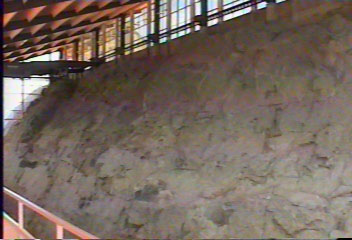 |
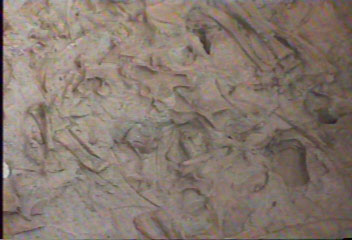 |
Bones might have washed down the river and settled here in a pool or have been left behind from a carnivorous dino. You can see this river bed is quite dense with bones. It was interesting to read about how the environment of millions of years ago was pieced together by the arrangement of the fossils, the type of plants and the distribution of mud sand and rock layers. |
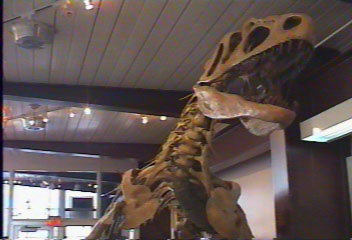 |
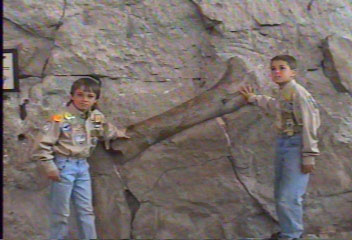 |
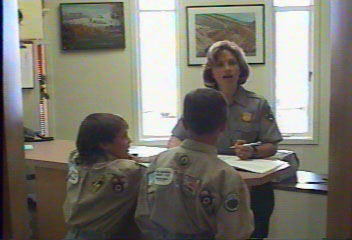 |
Dinosaur National Park offers one of the most comprehensive and time consuming Junior Ranger worksheets. It's a large park, (it's in both Utah and Colorado), and lots of driving was involved as well. As always though, the boys were quite proud and happy to collect another park patch. |
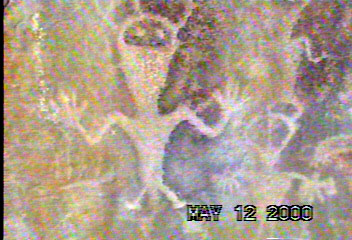 |
These petroglyphs are proof that the ancient ones were either poor artists or visited by aliens. (This is an "Ed editorial") |
| Here's a cabin that was the home of one of the area's pioneer residents.. |
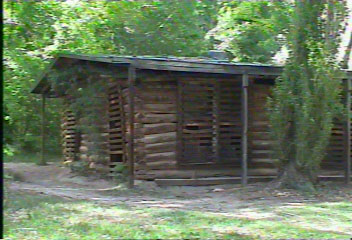 |
|
|
|
|
|
ã copyright Nodland 1999-2020